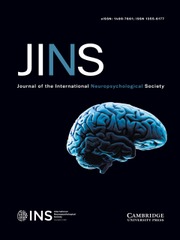No CrossRef data available.
Article contents
Beyond brain injury: Examining the neuropsychological and psychosocial sequelae of post-traumatic epilepsy
Published online by Cambridge University Press: 30 September 2024
Abstract
This study investigates neuropsychological and psychosocial outcomes in patients with traumatic brain injury (TBI) and post-traumatic epilepsy (PTE) compared to a healthy control group.
Utilizing a quasi-experimental cross-sectional design, the research involved patients with TBI and PTE referred from a Taiwanese medical center. An age- and education-matched control group of healthy adults without traumatic injuries was also recruited. The study involved analyzing retrospective medical records and applying a comprehensive suite of neuropsychological tests and psychosocial questionnaires.
Executive function measures revealed significantly reduced performance in both the TBI and PTE groups compared to controls. Specifically, the MoCA scores were lowest in the PTE group, followed by the TBI group, and highest in the controls. Measures of subjective symptomatology showed comparably elevated levels in both the TBI and PTE groups relative to controls.
The research suggests that PTE may intensify the difficulties faced by individuals with TBI, but its impact on overall recovery might not be significant, considering the trajectory of the brain injury itself. Notably, the MoCA results indicate that cognitive deficits are more pronounced in PTE patients compared to those with TBI, underscoring the necessity for targeted neuropsychological assessments. Further investigation is essential to explore PTE’s broader neuropsychological and psychosocial impacts. These findings advocate for tailored care strategies that address both neuropsychological and psychosocial needs, ensuring comprehensive management of TBI and PTE.
Keywords
- Type
- Research Article
- Information
- Journal of the International Neuropsychological Society , Volume 30 , Issue 8 , October 2024 , pp. 777 - 784
- Copyright
- © The Author(s), 2024. Published by Cambridge University Press on behalf of International Neuropsychological Society


